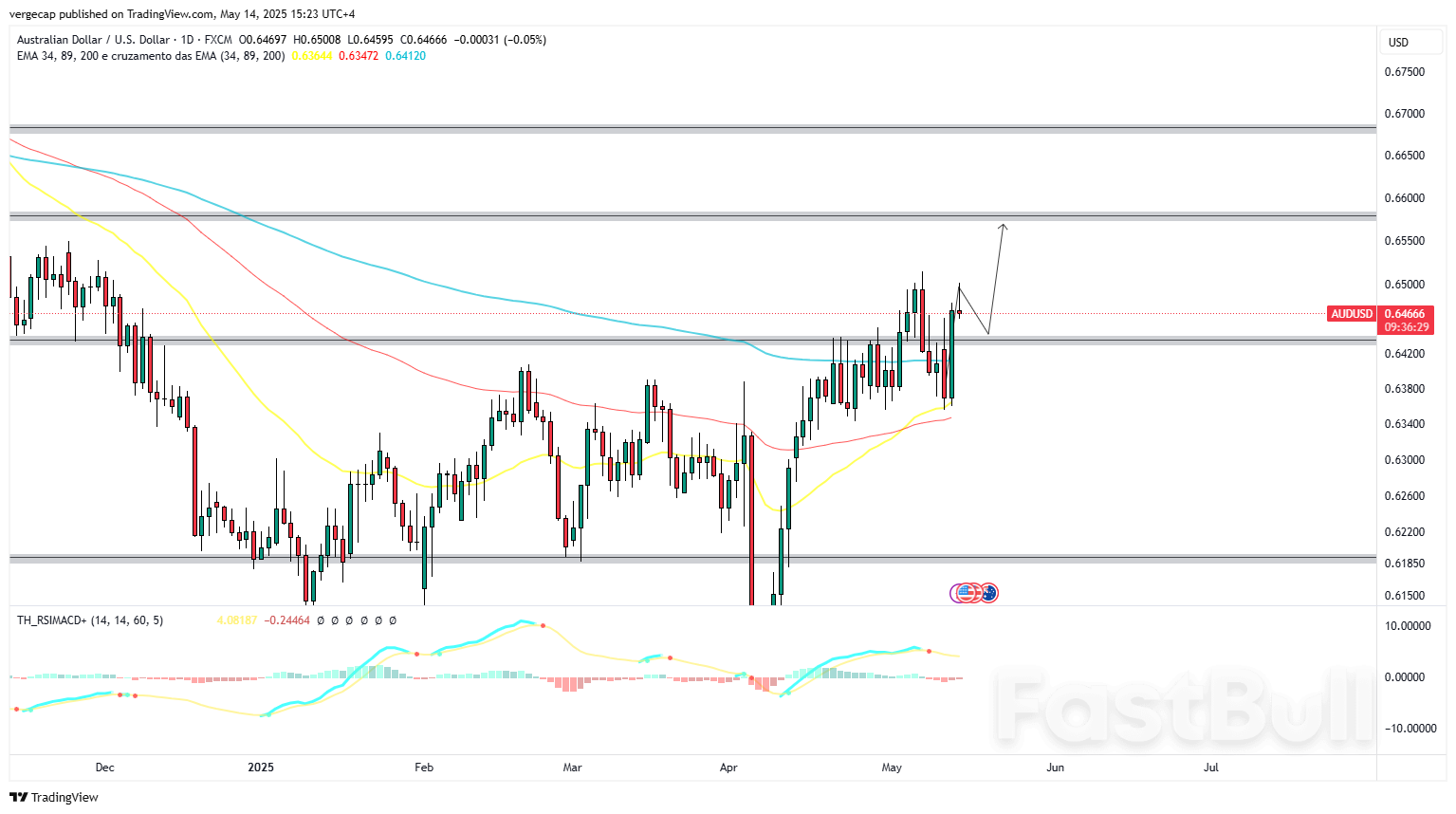The Australian Dollar continued its winning streak for a second consecutive session on Wednesday, gaining nearly 2% for the week against the Greenback, as upbeat domestic wage data and renewed pressure on the US Dollar buoyed sentiment around the AUD. The AUD/USD pair edged closer to the psychologically significant 0.6500 level, a threshold that traders are now eyeing as a key resistance area, amid broad-based weakness in the USD and changing central bank expectations on both sides of the Pacific.
The latest upside in the Aussie Dollar comes on the back of a combination of domestic economic resilience and external dovish signals from the United States. Australian wage growth surprised to the upside in the first quarter, with the Wage Price Index rising 3.4% year-on-year, outpacing the market consensus of 3.2%. On a quarterly basis, wages accelerated to 0.9%, compared to 0.7% in the prior quarter, and above the expected 0.8%. This data reinforces the narrative that Australia’s labor market remains tight, despite signs of a broader economic slowdown.
This stronger wage growth could typically argue against near-term monetary easing by the Reserve Bank of Australia (RBA). However, markets continue to price in a rate cut at the upcoming RBA meeting on May 20. According to the ASX RBA Rate Indicator, there is now a 54% implied probability of a 50-basis-point rate cut—from the current cash rate of 4.10% down to 3.60%—suggesting that investors expect the central bank to act decisively in response to fragile growth dynamics and soft consumer demand.
Despite the robust wage print, the RBA remains in a difficult position. Inflation has come down materially from its peak, and growth indicators have been mixed. Housing markets are stabilizing, but consumer spending remains under pressure. While the labor market continues to post positive metrics, the RBA may feel compelled to ease policy to prevent a deeper slowdown, especially as global headwinds mount.
Meanwhile, the US Dollar Index (DXY) slipped below the 100.00 level, hitting a fresh multi-month low following Tuesday’s release of softer-than-expected Consumer Price Index (CPI) data. The inflation print reinforced expectations that the Federal Reserve may soon shift its stance toward policy easing, possibly as early as September, despite ongoing caution in official rhetoric. Headline CPI rose just 0.3% in April, slightly below forecasts, while core inflation showed similar moderation.
Although the Fed has maintained a steady hand and continues to emphasize data dependency, the markets are increasingly leaning toward the idea of a pivot. According to CME’s FedWatch Tool, the probability of a rate cut by September now stands above 70%, as traders bet that disinflation trends will continue and that the Fed will eventually act to prevent an economic contraction.
This potential divergence in central bank policy—between a cautious Fed and a potentially proactive RBA—has added an interesting dimension to AUD/USD dynamics. While Australia’s near-term outlook remains clouded by a possible rate cut, the medium-term trajectory for the US Dollar looks vulnerable if the Fed indeed begins to unwind its tight policy stance.
On the data front, Wednesday is relatively quiet for both countries, though traders will be keeping an ear on comments from Fed Vice Chair Philip Jefferson and San Francisco Fed President Mary Daly. Any remarks hinting at a shift in the Fed’s tone could inject fresh volatility into the currency pair.
Looking ahead, Thursday will bring a fresh batch of macroeconomic data that could further shape the AUD/USD path. Australia’s April employment report is due, and any signs of labor market cooling could reinforce RBA cut bets. Simultaneously, the US will release key prints on Producer Prices, Retail Sales, and Initial Jobless Claims—each carrying potential to move the USD.
Technical Analysis
From a technical standpoint, AUD/USD broke and closed above a key horizontal resistance level on Tuesday, suggesting a near-term shift in momentum. The pair is now retesting this breakout area, forming a small ascending triangle pattern on the hourly chart—a structure often associated with bullish continuation.
Moreover, the Relative Strength Index (RSI) is signaling positive momentum, and the price is comfortably trading above its 50-period moving average. A clear breakout above 0.6500 could open the door toward the next major resistance near 0.6600. This level not only marks a psychological barrier but also coincides with a previous swing high.
In contrast, failure to maintain traction above 0.6500 could prompt some consolidation, with initial support resting at 0.6440, followed by a stronger floor near 0.6390.
TRADE RECOMMENDATION
BUY AUDUSD
ENTRY PRICE: 0.6460
STOP LOSS: 0.6370
TAKE PROFIT: 0.6600













